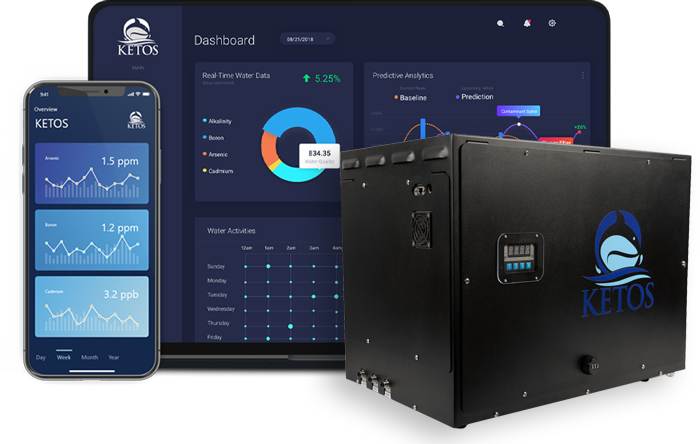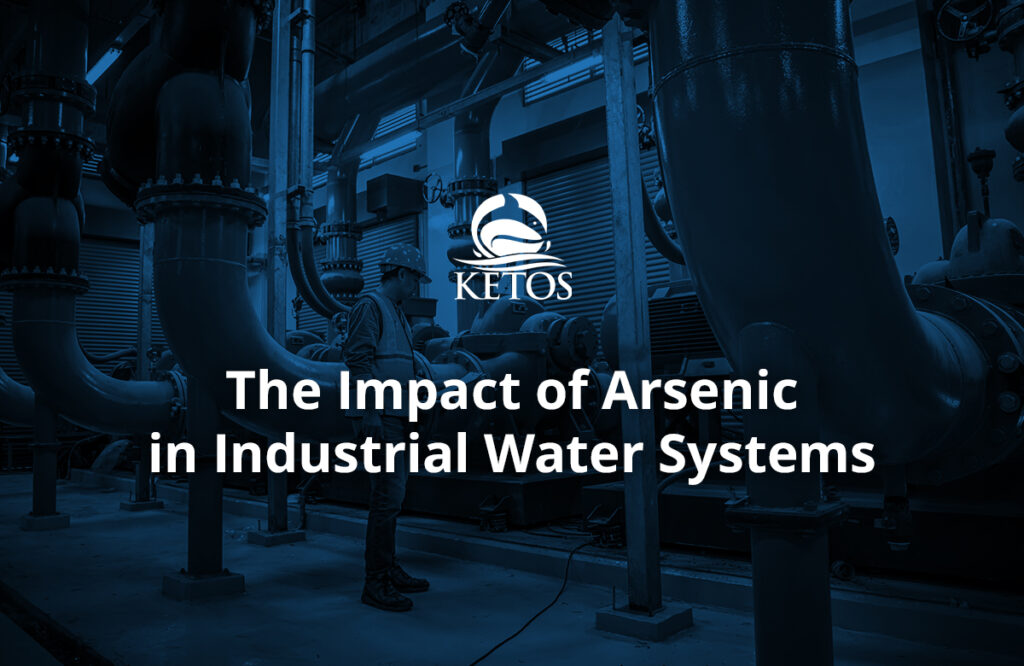In a recent webinar themed “Emerging Technologies and Innovation in the Water Industry,” KETOS CEO and founder, Meena Sankaran, was joined by Cristina Ahmadpour, President of Isle Inc., to discuss how water utilities are meeting the moment with the rise of digital water solutions. Cristina leads a team supporting progressive water utilities to help them identify, evaluate, and engage with the best available solutions to help water utilities work smarter and was the perfect person to help dissect how prepared utilities are in terms of digital transformation – and what might be holding them back.
During the discussion, they delved into some of the emerging technologies gaining traction in the water space and digital transformation trends.
A central theme, however, was what might be holding water operators back from adopting solutions designed to help make operations more efficient and resilient – and how the industry might overcome their reservations.
What’s Blocking Water Technology Adoption
A recent interesting Boston Consulting Group Survey highlights some current empirical data from 70 use cases that were industry-agnostic. They summarized that of the organizations going on the digital transformation journey, only 30% will realize success based on the outcomes they set. That’s not even the water industry. The water industry has its own sort of lens. However, they did summarize six areas that would be imperative to transformational success (moving that 30% to 80%). These areas are:
- What is the integrative strategy, and what are the quantitative measures of success?
- Commitment from the organization’s top (including buy-in, support, et cetera)
- Talent (in terms of speaking the language and understanding the implementation but also around culture and change management
- Agile governance
- Monitoring, accounting, and follow-through
- The ability to embrace cloud-based tools
With those challenges in mind, and with digital transformation facing a rocky start even in more agile industries, is the water industry ready to take up the challenge of adopting digital solutions? Do utilities have the skillsets required to pivot?
Right now, the answer may be no.
The water industry is about to go through a substantial shift as an entire generation of water operators move towards retirement. However, that’s just part of the issue. From a skills perspective, there may be a lack of individuals with the vocabulary or knowledge to lead the organization towards change.
However, the tides are turning. More conversations are happening across utilities more regularly. There are some open spaces where the industry can start building – and starting with what transformation looks like for the industry and where the opportunities are – including finding ways to extract good data and practical data usage to become more resilient and efficient.
Paths to Overcoming Digital Water Transformation Hesitancy
With challenges to digital water transformation visible, operators shouldn’t feel defeated or deflated. It is possible to adapt to the changing landscape without facing a steep learning curve or coming up against insurmountable funding constraints.
The best digital water tools, including KETOS’ water quality monitoring solutions, are designed to reduce friction traditionally related to adoption within complex water infrastructure environments.
For example, water operators leveraging KETOS do not have to worry about training personnel or to hire specialized experts to manage the devices. The solution can also be used by anyone within the utility. By being a completely self-sufficient hardware (with a simple software component that translates data within a simple dashboard) data is accessible and actionable.
Water operators concerned that they don’t have the personnel to manage a new device should be similarly looking for autonomous solutions that don’t require maintenance or calibration. For example, KETOS hardware self-calibrates, and the cloud-enabled software is programmed to monitor up to 30+ parameters, allowing a utility to curate which factors to monitor for within their own unique environment.
Digital Water Transformation Alongside New Price Models
Another typical obstacle for utilities is the price tag that often comes with infrastructure upgrades. Most utilities around the country work with limited budgets and are dealing with replacing aging infrastructure. Money is tight, and it’s hard to commit to a large-scale shift, especially if an organization must pay tens, if not hundreds or thousands of dollars, upfront.
Traditionally, adopting new infrastructure was a drought process. However, further additions were costly and often were siloed off from pre-established tools. Collecting data became problematic as it had to be collected separately and then collated together, often by a third party, usually off-site, which added to cost increases over time. For example, if a tool breaks or a part needs replacing, the utility would have to find room in their budget to cover the cost, and if it becomes obsolete after a few years of service, it becomes another piece of waste equipment that needs replacing.
Many organizations outside the water industry have adapted to these typical problems by introducing the concept of software as a Service (SaaS). The advantage of this novel approach to introducing technology to business meant that companies:
- received the latest technology
- had access to regular updates/upgrades to keep them on the cutting edge of their respective industry
- did not need to worry about covering the cost of damaged/end-of-life equipment
- were offered solutions that were easy to implement, had a low on-site footprint, and high adoption rates among staff
- were highly affordable with no upfront costs and an easy-to-manage monthly service fee
- had the freedom to leave their subscription if the solution did not prove to be an ideal fit for the organization
By tailoring the best that SaaS approaches have to offer, KETOS has developed an innovative SaaS (Platform as a Service) approach to water quality monitoring.
With KETOS, utility water operators get modular hardware that integrates within their existing infrastructure and cloud-enabled software that delivers the monitoring results to authorized devices. KETOS hardware self-cleans and calibrates and is maintained by KETOS technicians, removing the need for on-site, in-house maintenance.
The footprint of the devices is minimal, and operators no longer receive the sticker shock or high initial implementation costs. Instead, a company pays a low monthly fee, allowing for real-time water quality monitoring to happen for pennies on the dollar. The solution is budget conscious while offering constant access to the latest hardware and software upgrades without adding to the overall costs. This makes buy-in from stakeholders easier and allows a utility to rapidly transform their processes without the constraints of limited budgets – allowing them to govern with agility instead of their pocketbook.
Conclusion
What’s blocking many organizations – water utilities included – from genuinely taking advantage of all of the upsides isn’t insurmountable. The best technology is removing hurdles that traditionally were barriers to entry and making it possible for even the most conservative organizations to dip their water into solutions that can transform their offering almost overnight. By seeking solutions that can offer infrastructure improvements (while considering budget and personnel constraints), organizations are well positioned to make their operations more resilient and more modern at a fraction of the cost/time.
Want More Insights into the Changing Landscape of Water Utilities?
We’ve posted the webinar in its entirety to our KETOS YouTube Channel. Listen in on how obstacles and opportunities are shaping how water operators in water utilities are approaching digital transformation in water quality management.
You can view the full webinar recording here to learn more about what challenges (and exciting upsides) are in store for the sector.










